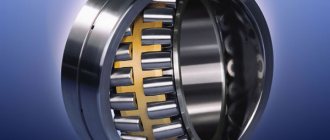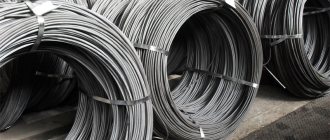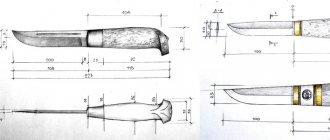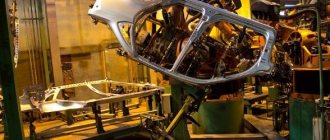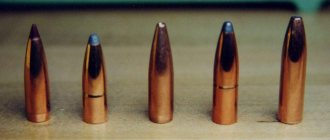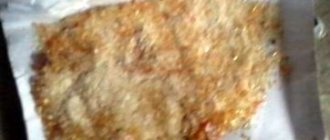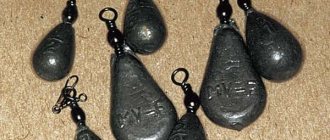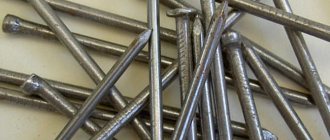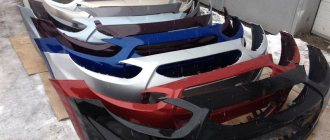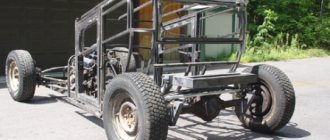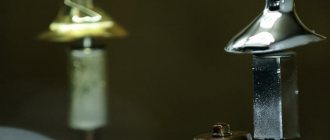Documentation
In our company you can buy bearing rollers, balls and industrial bearings with delivery.
To order, use our
contacts
The perfect shape of the ball in the bearings evokes admiration and justifiable interest in the production method. The surface of the product is perfectly smooth, the shape is perfectly round. The question of how balls for bearings are made has a detailed answer.
A complex technological process turns steel wire into a ball of the required diameter. Each stage of production is verified, because the product, on which the stable and reliable operation of complex mechanisms depends, must have precisely specified parameters. The development of technology leads to the gradual replacement of familiar designs and machines with newer and more advanced ones. But bearings remain a popular and relevant part of the design of cars, factory machines, and various devices.
In order to understand how balls for bearings are made, you need to trace all the stages of technological progress.
- Steel wire is cut into blanks that are characterized by a shape close to a ball. A wire is used whose diameter corresponds to the parameters of the ball. Then these blanks are rolled between disk dies with special grooves, the initially rough shape of the ball becomes more pronounced. For processing, enormous pressure is used, up to 20 tons. After such a running-in, the spherical blank has parameters that are only 100 crowns away from the required dimensions.
- Forming, which can be cold or hot, is an important step in the production of balls. The wire is passed through an upsetting machine, which has special ball-shaped recesses. Steel disks are closed around the wire and the result is a workpiece in the form of balls with a rim. Then these balls are heated and hardened. Parts are annealed to ensure high strength and reliability.
- The next stage is grinding the balls. In order to understand how balls for bearings are made, you need to carefully study all the stages. At the grinding stage, dimensional accuracy of parts up to 10 microns from the required level is achieved. Those rims that remain after the heading machine are separated from the balls. To do this, the ball is placed between two very thick sheets of metal, one of which is stationary and the second is rotating. Circular movements of the second sheet polish the ball. The polished products are separated from the rest through special holes. They pass through several chutes and are thus sorted by size. A machine is also used that adds shine to the finished products. The main final result is the production of balls of perfectly accurate size and high hardness.
- The final stage - the balls are washed, undergo quality control, and packaged.
The process is complex and requires special equipment. High-quality bearings must have balls with perfect sliding, which will give an absolutely smooth shape. The ball is responsible for the operation of the bearing (), and any extra micron can affect it. Therefore, it is especially important to control the size of the ball and the smoothness of its surface. It is imperative that high-quality steel wire is selected for production.
The rotation unit is an important part that provides motion during rolling or linear movement; it serves as a support or stop for the movable structure. More and more bearing manufacturing plants are being built in the Russian Federation. This becomes a profitable business, since such parts are used in all sectors of the national economy (heavy and light industry, ship and automotive industry, agriculture).
Production methods and stages
There are two main types: sliding and rolling. We will look at steel products, where the elements that facilitate rotation are balls. This is the most popular type currently. They are divided into radial and thrust. The difference is that the former compensate for loads directed perpendicular to the shaft, while the latter are responsible for axial displacement.
The part consists of an outer and inner frame, metal elements and a device that ensures their correct distribution around the perimeter. For units operating in conditions of increased contamination, a boot washer is installed on one or both sides. It prevents the entry of abrasive particles from the outside and limits the space in which the lubricant is located.
Bearing production technology begins with the preparation of the required steel grade. The plant receives metal of a certain grade in the form of round rods.
First, let's consider the issue of making clips:
- . Round bars are cut by an automatic line to the dimensions required for this type.
- . A hole is made in a cylindrical blank using a press. The result is a rough washer.
- . This is followed by the rolling process. In this case, the part acquires parameters and shape that are roughly similar to the final product.
- . The next stage is turning work. On a numerically controlled machine, the outer and side surfaces and the groove are formed along which the rolling elements will move.
- . Next comes the phase of imparting the necessary physical qualities to the workpiece. In most cases, this is done by hardening. First, heating occurs to 850 degrees, then sharp cooling to a temperature of 40 to 50 ° C and tempering. In a special chamber, the part is heated to 170 and allowed to cool slowly.
- . Bringing to the required dimensions by grinding. On machines in automatic mode, all parameters are refined to an accuracy that complies with GOST.
- . The last stage is polishing all surfaces to a clarity class of 0.06.
Grinding process
At the third stage, ceramic or steel parts undergo a grinding procedure, where their dimensions will be reduced to 10 micrometers from the original size (mm). As a result, the ceramic balls undergo the following processes: • The hardened parts enter a special ball grinding machine. Its design resembles the equipment described above. However, the distinctive characteristics are the presence of the most precise discs and grooves compared to previous equipment. • In this design, the parts go through a repeated rolling process through chutes. They are automatically mixed between rows of gutters. When a ball bearing, which can be purchased at an affordable price from the manufacturer, is rolled out of the machine, it has a high-quality ground surface. As a rule, at this stage, the preparation of spare parts for installation is completed. But in some cases, the manufacturer requires higher processing accuracy. This is necessary for ball bearings that will later be used in certain areas that require compliance with such conditions. Thus, they can be further amenable to finishing procedures.
Materials
An important question for production is what steel are the bearing races made of? The most common material is branded:
- . ШХ15;
- . ShH15SG;
- . ShH20SG;
- . ШХ4.
They differ in the content of technological additives. The composition includes magnesium, silicon, carbon, chromium in amounts up to 2 percent and impurities of sulfur, phosphorus, nickel, copper in very limited quantities. Hardness is acquired by heat treatment.
For products that can withstand heavy loads, it is necessary to have a strong contact surface and a plastic middle. In this case, steel grades are used:
- . 15G1;
- . 18HGT;
- . 20Х2Н4А.
The planes are cemented. In this case, strength is achieved from 59 to 66 HRCe. The core remains softer with a score of around 36. The production process is slightly different from before.
Industry requires units to operate in aggressive environments. For production in this case, steel grades 95Х18Ш and 110Х18МШД are used.
In foundries, in heat treatment units, products made from heat-resistant material are needed. In Russia they use 8Х4В9Ф2Ш and 8Х4М4В2Ф1Ш.
How balls for bearings are made at the factory, video
The production of such material is a high-precision production. It is necessary to achieve certain parameters at which friction will be minimized. This is usually a separate industry that provides rolling elements to assembly shops. It should be taken into account that the material is not only steel of different grades, but also ceramics, Si3N4. This is a completely different industrial cycle. They are used in units with high rotation speeds because they have less mass, are not subject to deformation at high temperatures, and pairs (steel, silicon nitride) have better sliding performance.
Manufacturing technology of balls for bearings:
- . A larger diameter rod is taken and cut into cylinders of the required length.
- . The cold-exhibition machine is shaped into a ball with a characteristic belt. The workpiece has dimensions slightly larger than required. The surface has a fairly rough configuration.
- . The next stage is rolling between two rotating disks. The future rolling element takes on an almost ideal shape with some allowance.
- . Then the parts are processed in a roller cutter. Using abrasive materials, scale and burrs are removed from the surface.
- . Next, rolling occurs between two cast iron faceplates. In this case, dimensions close to the required ones are achieved.
- . While soft elements require hardening. They are subjected to heat treatment or carburization. It depends on what metal it is made from.
- . The final stage of production is grinding. The workpieces are continuously rolled between two discs, automatically mixing. The output is a product with a tolerance of 10 microns. If necessary, the accuracy can be increased even higher.
- . The final phase is washing with special solvents, quality control in an automatic way, during which culling and sorting takes place according to accuracy class.
- . The product is packaged and labeled in accordance with GOST, and sent to consumers. Part of the goods is used for the production of rolling units, and the rest is sold as a finished product.
Tools you'll need
A range of mechanical tools have been developed to simplify the installation process. In particular, NSK offers the following products:
- The FTN333 mounting kit is an excellent option for installing small to medium diameter bearings (from 10 to 55 mm) using the cold fit method. This way you will complete this operation correctly and without any problems.
- Wrenches - available in standard and reinforced versions. Indispensable when installing locknuts. This is a simple and inexpensive means of mounting tapered seat bearings.
For the convenience of working with large diameter bearings, the company offers hydraulic equipment:
- Pullers, pushers and puller plates – provide large loads to maintain the recommended contact force between the part ring and the surface. They simplify the installation process and eliminate the possibility of errors during installation.
- Nuts – Using the offset method, they increase the accuracy and speed of installation of tapered bearing components. They have an anti-corrosion film, which means they have a long service life.
- Pumps - intended to be used together with nuts, pump oil and greatly simplify the operation.
In addition, induction heaters have been developed for each bearing size. NSK offers a range of devices in different sizes and capacities. They ensure optimal and safe parts temperatures to ensure a smooth shrink-fit installation process.
Raw materials and how balls for bearings are made: video
A small part for the entire mechanism is one of the most complex in a technological sense. After all, it is very difficult to achieve smooth, round balls from a metal rod with precise dimensions down to hundredths of a micron, because an extra indicator can negatively affect the operation of the entire mechanism. The factories use special high-quality steel, regulated by GOST 3722-81:
- . Chrome-carbon sheet, type ШХ15. For indicators with higher hardness, ShKh4, ShKh20, 15 G 1, 12Kh18, 95Kh18, 18KhGT, 110Kh18, 8Kh4M4V2F1 are used to order.
- . Molybdenum. It is used for making hunting shotgun pellets and for special-purpose balls. Copper, aluminum, brass, polyamides, polymers and cermets are added to the main component in small quantities.
- . Recently, a new alloy made of synthetic material has been used - silicon nitride. It is used to produce special-purpose products that are capable of self-reinforcement.
We have determined what steel the bearings are made of. Steel balls are used for the production of rolling units. Separately, they are used in various sectors of the national economy. They are also indispensable in the automotive, paint, defense, cement, confectionery, chemical and agricultural industries. In addition, they can act as separate parts for deodorants and pen refills.
These devices are an integral part in the manufacture of wheels and rollers for warehouse equipment (hydraulic trolleys, lifters), for spare parts and furniture fittings. You can find the required part in the catalog of the MPlast online store. To do this, you need to enter the website and find the required product there, as well as decide on the price and form of payment.
In units operating in aggressive environments, balls with a high nickel content are used. Environmentally friendly shot is rolled from soft iron (lead causes more harm to the environment than low-carbon steel) and copper-plated shot, with a diameter of 4.5 for air guns.
The next step in manufacturing was the creation of rolling elements from ceramics. They have found their application in extreme operating conditions (jet engines, spindles in metalworking machines, Formula 1 cars.
Factories
In Russia there are more than two dozen large enterprises that produce such products. We will give some examples:
- . JSC "Moscow Bearing" Specializes in the production of parts for metro construction and railways.
- . OJSC GPZ-2 is the oldest plant, operating since 1916. It produces a huge range of small-sized products from 4 to 6770 grams. Supplies products to 50 countries.
- . Saratov has been operating since 1941. The product for consumers is balls.
- . Samara "ZPON" produces roller mechanisms of various types (4000 items). It has equipment production and its own research base.
- . Tomsk "ROLTOM" GPZ-5. It produces mechanisms with miniature sizes with a diameter of 2 mm to large ones - 22 cm.
- . Yekaterinburg plant No. 6 specializes in the production of spherical double-row products with increased radial load.
- . Baku gas processing plant-7.
- . Kharkovsky No. 8. The production range of products is from 30 g to 45 kg.
- . Samara plant number 9 produces roller units.
- . GPZ-10 in Rostov-on-Don has been operating since 1938 and produces parts for agricultural machinery, processing equipment and metallurgy.
Products come to the Russian market from factories in different countries. The most popular bearings are made:
- . In the People's Republic of China by AAA. It specializes in the manufacture of parts for the automotive industry.
- . And India at the ABC Bearings concern. The company has been operating successfully for more than 50 years and imports its products to many countries around the world.
- . In Slovakia by AKE. This new brand is not inferior in quality to famous brands. Every year the range of manufactured products increases, the cost of which is significantly lower than that of other imported analogues.
Kinds
These mechanisms can be divided into groups according to the direction of the load, according to the elements on which the holders rest, according to the presence or absence of a rotating spacer and according to the material of manufacture.
What are they made of and how are they made?
The product can be radial and supporting, with full or partial rotation. Depending on the operating conditions, it is manufactured in the form of: outer and inner races (lower and upper), sliding sleeve (washer), lubrication system (forced, natural, air).
Polished surfaces, due to the lubricant or due to the physical properties of the gaskets, provide long-lasting easy sliding. Raw materials for production: steel, cast iron, bronze, fluoroplastic, babbitt, aluminum, ceramics. Pairs with a minimum friction coefficient are selected. What metal the bearing bushing is made of directly determines in which cage it will rotate.
Rolling
Such units are divided into radial, thrust and complex. This determines the direction of the load. The first are divided into three main classes: ball, roller, needle. These species can be with or without restrictive rings, with one or two anthers, and completely open.
The second type is created on the basis of spherical elements, cylindrical and conical rollers. Completely collapsible varieties are available. The third one combines the qualities of the first and second in terms of perceived effort. There are also open and closed types.
Depending on the materials for the manufacture of rolling bearings, there are several subclasses:
- . standard (most common);
- . designed for increased loads;
- . designed for extreme temperatures;
- . resistant to aggressive environments.
For special conditions (ultra-high rotation speeds, strong heating, the need to operate in the presence of acids and alkalis), products made of ceramics, silicon nitride, and plastics are used. There are models where the sliding layer is a gas or a magnetic field.
Installation diagrams for angular contact bearings
O-shaped
This installation option is also called back-to-back, which means: the load distribution lines are directed towards the p/w axis. Using a similar technique, the same impact is perceived in both directions, each with a uniformly directed force.
Positive aspects are the ability of the bearing unit to absorb pulsed short-term loads and the guarantee of increased rigidity of the connection.
X-shaped
In parts mounted according to a similar scheme, which is also called face-to-face, the load distribution vector is directed towards the p/w axis, receiving impact in both directions.
With this installation method, the prefabricated assembly is less susceptible to moment forces.
Tandem
If it is impossible to withstand the existing axial and radial power and dynamic loads with one p/w, to ensure the necessary performance of the unit, the tandem installation method is used, in which the parts are mounted unidirectionally. Radial and axial force loads are distributed equally between the p/w.
The prefabricated unit can withstand the load only in a given direction, therefore, if there is a threat of acting force on the other side, it is recommended to additionally install another p/sh to compensate for the load.
Device
It is not possible to describe all the diversity. Fundamentally, this mechanism consists of an external and internal support (they can be replaced by a housing part), a sliding gasket (lubricant, a separator with rolling elements, a bushing).
The most common type is done like this:
- . two washers with grooves having the required radius of curvature;
- . balls fixed with a special device at the same distance from each other along the entire perimeter;
- . When the clips move, friction decreases sharply.
How to assemble ball bearings: video
The process looks like this:
- . The suitably prepared clips are inserted into one another and touch at a single point. As a result, a space is formed on the side opposite to the contact through which the balls can be inserted.
- . The number of rolling elements with this design is limited. The next step is to distribute them evenly around the perimeter. In this case, the inner ring is automatically centered relative to the outer one.
- . Specially manufactured separator halves are installed below and above. The standard product is made from carbon steel. But there are varieties when fixation occurs due to a brass or plastic part. The latter consists of one part and simply snaps into place.
- . On a special machine, the two halves of the holding device are connected with rivets made of metal through a pre-prepared hole.
- . The product is washed and lubricated (with lithol, cyatim, graphite or a preservative compound).
- . Protective boots are installed. They can be metal, plastic or composite.
- . Next, the goods are marked according to GOST standards and packed in boxes.
Assembly of the support product consists of creating a separator that holds the rolling elements in certain places. The edges of the device are rolled. It is sold in the form of three parts (the upper and lower washer, and the assembly itself).
For high loads it is necessary to create more points of contact. It is impossible to place additional balls into the classic mechanism. Then manufacturers make technological recesses in the disks, through which the number of contact points becomes maximum. Subsequently, the classic riveting of the separator occurs.
One of the trusted suppliers is. It sells products based on bearings produced in Russia by factories with an ideal reputation.
A bearing is an important structural part that provides rotational movements of parts during rolling or linear movement. It is an assembly unit consisting of two round plates: an outer and an inner ring. A separator with several balls is inserted inside the structure, which ensures the torsion of the mechanism.
Bearing Ball Size Chart
| International designation | Analogue (GOST) | Ball diameter | Number of balls |
| 607 | 17 | 3,97 | 6 |
| 608 | 18 | 3,97 | 6 |
| 623 | 23 | 1,59 | 7 |
| 624 | 24 | 2,38 | 6 |
| 625 | 25 | 3,18 | 6 |
| 626 | 26 | 3,97 | 6 |
| 627 | 27 | 3,97 | 7 |
| 629 | 29 | 4,76 | 7 |
| 634 | 34 | 3,18 | 6 |
| 635 | 35 | 3,97 | 6 |
| 693 | 1000093 | 1,59 | 6 |
| 694 | 1000094 | 2 | 7 |
| 695 | 1000095 | 2 | 8 |
| 696 | 1000096 | 2,38 | 8 |
| 697 | 1000097 | 3 | 7 |
| 698 | 1000098 | 3 | 8 |
| 699 | 1000099 | 3,5 | 7 |
| 6000 | 100 | 4,76 | 7 |
| 6001 | 101 | 4,76 | 8 |
| 6002 | 102 | 4,763 | 8 |
| 6003 | 103 | 4,763 | 10 |
| 6004 | 104 | 6,35 | 9 |
| 6005 | 105 | 6,35 | 10 |
| 6006 | 106 | 7,14 | 11 |
| 6007 | 107 | 7,94 | 11 |
| 6008 | 108 | 7,94 | 12 |
| 6009 | 109 | 8,73 | 13 |
| 6010 | 110 | 8,73 | 12 |
| 6011 | 111 | 10,32 | 13 |
| 6012 | 112 | 11,11 | 12 |
| 6013 | 113 | 10,32 | 15 |
| 6014 | 114 | 12,3 | 13 |
| 6015 | 115 | 12,3 | 14 |
| 6016 | 116 | 13,5 | 14 |
| 6017 | 117 | 13,5 | 14 |
| 6018 | 118 | 14,3 | 15 |
| 6010 | 119 | 14,288 | 14 |
| 6020 | 120 | 14,3 | 15 |
| 6021 | 121 | 17,462 | 13 |
| 6022 | 122 | 18,256 | 15 |
| 6024 | 124 | 18,256 | 15 |
| 6026 | 126 | 20,638 | 14 |
| 6028 | 128 | 20,638 | 15 |
| 6030 | 130 | 22,225 | 16 |
| 6032 | 132 | 23,812 | 15 |
| 6034 | 134 | 26,988 | 14 |
| 6036 | 136 | 30,162 | 14 |
| 6038 | 138 | 30,162 | 14 |
| 6040 | 140 | 33,338 | 13 |
| 6044 | 144 | 35,719 | 13 |
| 6048 | 148 | 36,512 | 14 |
| 6052 | 152 | 41,275 | 14 |
| 6056 | 156 | 41,275 | 15 |
| 6200 | 200 | 5,95 | 6 |
| 6201 | 201 | 5,56 | 7 |
| 6202 | 202 | 5,95 | 8 |
| 6203 | 203 | 7,14 | 7 |
| 6204 | 204 | 7,94 | 8 |
| 6205 | 205 | 7,94 | 9 |
| 6206 | 206 | 9,53 | 9 |
| 6207 | 207 | 11,11 | 9 |
| 6208 | 208 | 12,7 | 9 |
| 6209 | 209 | 12,7 | 9 |
| 6210 | 210 | 12,7 | 10 |
| 6211 | 211 | 14,29 | 10 |
| 6212 | 212 | 15,88 | 10 |
| 6213 | 213 | 16,67 | 10 |
| 6214 | 214 | 17,46 | 10 |
| 6215 | 215 | 17,46 | 11 |
| 6216 | 216 | 19,05 | 10 |
| 6217 | 217 | 19,84 | 11 |
| 6218 | 218 | 22,23 | 10 |
| 6219 | 219 | 23,823 | 10 |
| 6220 | 220 | 25,4 | 10 |
| 6221 | 221 | 26,988 | 10 |
| 6222 | 222 | 28,575 | 10 |
| 6224 | 224 | 30,162 | 10 |
| 6226 | 226 | 28,575 | 11 |
| 6228 | 228 | 28,575 | 11 |
| 6230 | 230 | 33,338 | 11 |
| 6232 | 232 | 34,925 | 11 |
| 6234 | 234 | 41,275 | 10 |
| 6236 | 236 | 38,1 | 11 |
| 6244 | 244 | 44,45 | 11 |
| 6300 | 300 | 7,14 | 6 |
| 6301 | 301 | 7,94 | 6 |
| 6302 | 302 | 7,94 | 7 |
| 6303 | 303 | 9,53 | 6 |
| 6304 | 304 | 9,53 | 7 |
| 6305 | 305 | 11,51 | 7 |
| 6306 | 306 | 12,3 | 8 |
| 6307 | 307 | 14,29 | 7 |
| 6308 | 308 | 15,08 | 8 |
| 6309 | 309 | 17,46 | 8 |
| 6310 | 310 | 19,05 | 8 |
| 6311 | 311 | 20,64 | 8 |
| 6312 | 312 | 22,23 | 8 |
| 6313 | 313 | 23,81 | 8 |
| 6314 | 314 | 25,4 | 8 |
| 6315 | 315 | 26,99 | 8 |
| 6316 | 316 | 28,58 | 8 |
| 6317 | 317 | 30,16 | 8 |
| 6318 | 318 | 31,75 | 8 |
| 6319 | 319 | 34,925 | 8 |
| 6320 | 320 | 36,51 | 8 |
| 6321 | 321 | 38,1 | 8 |
| 6322 | 322 | 41,275 | 8 |
| 6324 | 324 | 42,862 | 8 |
| 6326 | 326 | 44,45 | 8 |
| 6330 | 330 | 50,8 | 8 |
| 6403 | 403 | 12,7 | 6 |
| 6405 | 405 | 16,67 | 6 |
| 6406 | 406 | 19,05 | 6 |
| 6407 | 407 | 20,64 | 6 |
| 6408 | 408 | 22,23 | 6 |
| 6409 | 409 | 23,02 | 7 |
| 6410 | 410 | 25,4 | 7 |
| 6411 | 411 | 26,99 | 7 |
| 6412 | 412 | 28,58 | 7 |
| 6413 | 413 | 30,16 | 7 |
| 6414 | 414 | 34,93 | 7 |
| 6416 | 416 | 38,1 | 7 |
| 6417 | 417 | 39,69 | 7 |
| 6900 | 1000900 | 3,97 | 7 |
| 6901 | 1000901 | 3,97 | 7 |
| 6902 | 1000902 | 3,18 | 12 |
| 6903 | 1000903 | 3,5 | 11 |
| 6904 | 1000904 | 5 | 10 |
| 6905 | 1000905 | 5 | 12 |
| 6906 | 1000906 | 5 | 13 |
| 6907 | 1000907 | 5,95 | 13 |
| 6908 | 1000908 | 6,35 | 14 |
| 6909 | 1000909 | 7,14 | 13 |
| 6911 | 1000911 | 6,35 | 18 |
| 6912 | 1000912 | 7,14 | 19 |
| 6913 | 1000913 | 7,144 | 19 |
| 6915 | 1000915 | 8,731 | 18 |
| 6916 | 1000916 | 9,525 | 17 |
| 6917 | 1000917 | 10,319 | 17 |
| 6918 | 1000918 | 10,319 | 18 |
| 6919 | 1000919 | 10,319 | 18 |
| 6920 | 1000920 | 12,7 | 16 |
| 6921 | 1000921 | 12,7 | 17 |
| 6922 | 1000922 | 11,509 | 19 |
| 6924 | 1000924 | 13,494 | 18 |
| 6926 | 1000926 | 15,081 | 18 |
| 6928 | 1000928 | 11,509 | 19 |
| 6930 | 1000930 | 17,462 | 18 |
| 6832 | 1000932 | 17,462 | 18 |
| 6934 | 1000934 | 17,462 | 20 |
| 16002 | 7000102 | 4,76 | 8 |
| 16003 | 7000103 | 5,16 | 9 |
| 16004 | 7000104 | 5,556 | 10 |
| 16005 | 7000105 | 5,56 | 11 |
| 16006 | 7000106 | 5,56 | 14 |
| 16007 | 7000107 | 5,56 | 15 |
| 16008 | 7000108 | 6,35 | 16 |
| 16009 | 7000109 | 6,35 | 17 |
| 16010 | 7000110 | 6,35 | 18 |
| 16011 | 7000111 | 7,14 | 17 |
| 10012 | 7000112 | 7,14 | 18 |
| 16013 | 7000113 | 7,14 | 19 |
| 16014 | 7000114 | 7,14 | 18 |
Types of bearings
Bearings differ in type of design and material of manufacture:
- The most commonly found in household appliances and familiar to consumers are ball bearings.
They are placed on devices that do not experience heavy loads. For example, electric motors, woodworking machines, gearboxes. Used in medical equipment. - Spherical bearings
have the greatest strength and can withstand even extreme loads, which is why they are installed in mechanisms such as crushers or pumps. - Small parts in household appliances often use needle bearings
. In the mechanism of such products, thin cylindrical sticks are inserted, shaped like a needle. - Cylindrical
bearings are considered one of the most reliable bearings that can withstand sufficient loads . They are used in mechanical engineering: in automobile, aviation and railway transport.
Why do you need to disassemble bearings?
Dismountable bearings are used for many components on bicycles and scooters. And the task of the vehicle owner is to periodically check the condition of the mechanisms, clean and lubricate them, clearly understanding how to disassemble the bearing. When the bearing seat is not protected, dirt, water, fine gravel, and sand may get inside. The last component is especially destructive for small rotating mechanisms. As a result, the bearing becomes clogged, and the bicycle or scooter moves noisily and, moreover, somehow jerkily. None of the drivers, even beginners, like the deterioration of the driving performance of personal vehicles. So what to do? – Check the condition of the bearings.
Separable bearings
Ball bearing device
Let's consider the first version of the product. Such a device consists of two metal plates that have special grooves or so-called raceways in the middle of the planes. On a large outer ring such a groove is located on the inside, on a ring of a smaller diameter - on the outside.
A separator with inserted balls is inserted into the center of the structure. Thanks to this system, rolling occurs smoothly. When installed on the mechanism, bearings can also be wiped with lubricants for better rotational movement.
The separator consists of two parts - the so-called half-separators. These two parts are then soldered together using spot welding. Sometimes they are attached to mounting brackets or by riveting. Such devices may have one or two rows of balls.
Design and assembly process
A bearing consists of several elements, which include the inner and outer ring, shaft, cage, and housing. The rotation of the bearing is ensured by rolling elements - these are small steel balls.
Bearings are assembled in a factory using special mechanisms. The whole process can be divided into several operations:
- the balls are placed in the outer ring. They must be located strictly on the track, their number and order are calculated based on the diameter of the inner ring;
- the central ring is inserted into place and centered;
- Snake semi-separators allow you to evenly distribute the balls throughout the ring. To do this, they are first accelerated and then fixed.
The final stage of bearing assembly is the connection of two semi-separators. Automatic welding can be used for this purpose, but often they are simply riveted together.
Roller bearing device
Another version of the device for rotating parts consists of rollers. These are metal cylinders or cones of the same size that are inserted into the separator in the middle between two rings. Such products are much stronger and more reliable than ball bearings. They are used in mechanical engineering: automobile, aviation and railway transport.
There are roller inserts of cylindrical or conical shape, which are placed in the inner part of the part in one or several rows. Cylindrical rollers, after the bearing is assembled, are installed in guillotines, powerful gearboxes and electric motors, spindles of metal-cutting machines or pumps.
The cone shape is used in products for helical mechanical transmissions, in automobile transport, and in the hubs of passenger cars.
How to prepare bearings for installation
The elements are installed in dry rooms without excessive humidity, pollution and dust. It is undesirable to carry out fastening near metal-cutting machines, the operation of which is associated with the appearance of chips and splashes of cooling emulsion.
If it is necessary to assemble the unit in an unprotected area of the workshop space, measures should be taken to prevent foreign matter and liquid from entering the ball bearings and seats. It is effective to use foil or technical paper impregnated with oil or paraffin.
The main rules that must be followed before putting on and securing a bearing to a shaft or pipe:
- Before carrying out work, you should prepare in advance all the required components, tools, accessories, consumables and technical documentation;
- Carry out a thorough check for contamination and defects in housing parts, shafts, seals and other components. Pay special attention to threaded channels, holes and recesses, which can become a concentration of old lubricant or metal shavings remaining after grooving;
- Thoroughly study the drawings to determine the order of actions for preparing the seats before pressing or seating the bearing on the shaft;
- In cast body elements that have not been subjected to pre-machining, remove the remains of the molding compound, nicks and other defects;
- Carefully check compliance with the specified parameters in the documentation of all parts of the assembly assembly. The required functionality is possible only if all tolerances established by technical standards are observed. Use ring gauges, special measuring tools and sine rulers, recording all data in a journal.
Parameter control must be carried out at a positive temperature. If large-sized elements were in an unheated warehouse, keep them in a warm room for several hours before starting all work.
Preparing to assemble the bearing
At enterprises, assembly processes are carried out using special equipment, namely shafts. Before assembling the bearings, check the quality of the surfaces of both the shaft and the rings of the product. There should be no damage to them: scratches, burrs, nicks, painted marks, metal corrosion spots, cracks.
All surfaces are thoroughly wiped, dried and lubricated with a thin layer of lubricant before assembling the bearings. Only after this can assembly operations begin.
Mechanical method
This method is used for small parts, the internal diameter of which is up to 60 mm. When assembling, the main thing is to follow one important rule: the force during mechanical mating of the outer and inner rings should not be transferred to the cage. It appears only at the ends of the rings.
It is also strictly forbidden to knock on the ring. Light blows can only be delivered through additional material, such as a soft metal bushing. In factories, these tasks are performed by automated machines on conveyor belts.
Features of installing the release bearing
This p/sh is one of the main components of the vehicle clutch assembly, installed between the engine and the gearbox. Its task is to open the flow when the pedal is pressed. A special drive moves the p/w along a guide on the shaft to the basket, pressing on the diaphragm. Different vehicles use mechanical and hydraulic parts. To install, you must follow a certain algorithm:
- dismantle the gearbox to gain access to other components;
- move away the ends of the clamp where the coupling meets the glass;
- remove the p/w from the bushing simultaneously with the coupling and the spring holder, pressing out the 4 fasteners;
- inspect the old component for defects, check the seat and adjacent components;
- Before installing a new unit, check for play and the possibility of free rotation;
- mount the part on the guide bushing and fix it with a spring device together with the coupling, after applying copious amounts of lubricant;
- After checking the proper fit, replace the gearbox.
A similar method describes replacing the p/w on a VAZ passenger car; when installing a release bearing on a MAZ and other cargo vehicles, you should follow the detailed instructions and recommendations of the vehicle manufacturer. It is advisable to use specialized devices and carry out repair work at a service center, this is especially true for machines under warranty.
Step-by-step assembly sequence
Let's look at how to assemble a disassembled bearing:
- It is necessary to place the outer ring in a vertical position and lubricate its groove from the inside with a thick, almost solid lubricant, but not to the end of the circle, but approximately three-quarters of its surface.
- After this, you need to insert the balls one by one with thin tweezers, sinking them into the lubricant.
- Before assembling the ball bearing, you need to attach the inner ring to the balls, pressing it down a little. Then we carefully begin to scroll in a circle so that they are distributed at equal distances from one another.
- Then we insert the separator and turn it so that the balls find their place in the recesses.
- When all the balls snap into the compartments, you can wipe the lubricant with a dry cloth. For complete washing, it is advisable to use kerosene.
Bearing repair
There are cases when the bearing in the device begins to turn poorly. There may be several reasons. For example, dirt has accumulated in the lubricant. In order to give the product a new life, it must be thoroughly cleaned and rinsed. You can use gasoline for these purposes.
- First you need to remove the oil seal cover, clamp the bearing in a vice and carefully drill out the cage rivets with a thin drill. This can only be done if there are several old bearings, and if the cage or one half of it breaks, it will be possible to assemble a whole one from other products.
- All rivets on the separator must be carefully cut off with a grinder so that the half is intact and not bent.
- The next step will be to clean the rings and shaken out balls from dirt, and wash the parts in gasoline. At the same time, you need to check the condition and integrity of each bearing element.
- Next comes the most difficult stage of the repair work - putting all the balls back into the structure.
- Before properly assembling the bearing, you need to grind the rings. First, the first half of the separator is inserted, then carefully, one at a time, the balls must be placed in each groove so that they fill all the holes.
- After this, rivets are made. You can use copper wire.
- Next, apply a layer of fresh lubricant and close the oil seal cover.
It is not recommended to install bearings repaired in this way into units, a motorcycle or a car. You can use them for household purposes at your summer cottage or repair a scooter for your child.
Bearing disassembly steps
- We pick up the bearing and assess its condition.
- We inspect the places where the boot locking rings are fixed.
- We take a needle or a pointed screwdriver in our hands and carefully pry off the boot. It gives in easily.
- Do you understand how to disassemble the bearing? – Then start washing the old part. To do this, we throw the metal boot and the upper locking rings into a prepared tank with gasoline. Let them be cleansed.
- The bearing is soaked separately.
- We send all small parts to dry.
- Parts are lubricated. Liquid or plastic lubricant is selected individually for each part.
It is important to understand! Liquid lubricant is easier to apply, but it only lasts for a short period of time, so you will have to work in the workshop often, resuscitating the running capabilities of the vehicle. Plastic lubricant is more practical; it ensures smooth running of the bearing for almost a year or for a season of operation of roller skates, bicycles, and scooters.
- At the final stage, the bearing is carefully assembled, checked for rotation and suitability for further use.
Thus, it is possible to find out how to disassemble the bearing. You just need to understand how justified this is in financial and energy terms. And what can you get as a result? Is this what you were striving for?
Good luck to everyone in the workshop! Creative success and inexhaustible enthusiasm. It will be needed when repairing any vehicle, powerful or not.
Source: tire1.ru
How to assemble a small bearing?
Nowadays a rotating toy called a spinner is very popular among children. But what happens if a child drops such a spinning object on the floor? There were times when the baby ran to his parents in tears and wailed that the spinner was broken.
And most often the problem for parents is how to collect the scattered bearing. Small items are much more difficult to assemble, but quite possible. To do this you will need to use thin tweezers.
Most often, such toys use simple ball bearings without cages, in which the balls rotate along the grooves of the rings. To assemble all the parts together, you need to use the mechanical assembly method described above. If you can’t, then you need to use knowledge about the properties of the metal.
One of the rings should be placed in warm water, and the other in the refrigerator. Frost will cause the metal to become smaller, and after heat treatment it will expand. This will make putting them together much easier. Good luck!
A bearing is a functional unit that performs the function of supporting and guiding a rotating shaft and axle. The device is designed to reduce friction between the moving part of the mechanism, as well as its stationary elements.
Bearings reduce energy loss, eliminate heat and reduce wear of parts.
Leading manufacturers
Among the world's famous brands, experts especially highlight the following manufacturers:
- Swedish industrial group SKF supplies products to 130 countries;
- German manufacturer FAG;
- Slovak concern Kinex
- French company SNR - considered the largest supplier for Europe;
- Japanese companies NSK, NTN and Koyo;
- American concern TIMKEN
To produce high-quality products, strict adherence to technological standards at all stages of production is mandatory. Only well-known global brands usually meet this requirement. The Ukrzakhidpostach company supplies bearings exclusively from leading brands, the quality of which has been tested by time.
Features and stages of production
The production of bearings requires the use of special grades of steel. For the rings and rolling elements, steel made from iron is selected, while the cage will require alloys of heavy and light metals such as cast iron, bronze, aluminum and brass.
A large number of specialized bearings have now been developed, each of which has its own technological production chain. Regardless of this, all products undergo turning, pressure treatment, heat treatment, grinding, and assembly during the manufacturing process.
Ring production
These elements are manufactured according to the following scheme:
- Blanks are prepared from metal pipes and rods according to the calculated diameter.
- The initial processing is carried out by rolling and pressure.
- Turning work is carried out aimed at cutting individual rings and general surface treatment.
- Heating the rings to 850ºС, then rapid cooling to 40ºС.
- Tempering of parts at a temperature of 170ºС.
- Grinding of end, internal and external surfaces, raceways.
- Final grinding of raceways to the required roughness values.
Manufacturing of rolling elements
The technological chain for the production of these parts is as follows:
- Using a special steel wire of a certain diameter, the initial blanks are cut.
- The parts are compressed with a special press to give them a spherical shape.
- A final pressure treatment is carried out to achieve an allowance of 100 microns.
- Heat treatment using the same method as for rings.
- Sanding and polishing the product.
Separator production
To manufacture the separator, another technological chain will be required:
- Preparation of the workpiece - steel sheet.
- Punching holes in the sheet corresponding to the rolling elements.
- Rough and finishing stamping of a workpiece, aimed at giving it the required shape.
- Drilling holes for rivets.
- Finishing holes.
How is a radial ball bearing assembled?
Many people know this. However, those who do not know try to explain that somehow the individual components are heated or cooled, as a result of which the metal expands or contracts, etc. and so on. In fact, everything is much simpler. I will not write anything further, but I will present the solution to this “most complex” assembly process in illustrations.
No duplicates found
I didn’t know how it was put together, but I knew how to take it apart)) Oh, these coveted balls) Just a childhood thing.
Oh, you are ska. I still have a scar on my finger from a piece of broken bearing. And they just get the balls.
And at one time I hit them with a sledgehammer in a mitten). Experienced guys advised me to put the bearing in a mitten, they said it would fly apart like a grenade)
Author, please write down the next post about how to safely get a beautiful glass shirik from a can of spray paint =)
What's the problem? You release the pressure by turning the can upside down when the paint runs out. Then you fuck on the nail, finally leveling it. Then you either bend and unbend it and break it, or use scissors.
What if it is packed end-to-end, without a retaining bracket?
Description for you:
Bearing assembly from finished parts. The bearings are assembled in the following way: the inner ring is placed into the outer ring, and a number of balls are placed between them. One of the edges of the inner ring is raised to allow the entire row of balls to be stacked, and then the bearing "snaps" and the rolling elements fit tightly onto the raceways. A separator (brass, metal, polyamide, etc.) is attached on both sides with rivets.
Source: pikabu.ru
